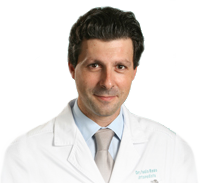- /
- Anca infantil /
- A anca normal da criança e do adolescente
The normal child and adolescent hip
The diseases of the hip in growth can cause groin pain or pain radiating into the thigh and / or knee, refuse to gait and support the body's own weight. There are many causes for these symptoms and the diagnosis is not always easy. Transient synovitis, one of the most common causes of hip pain in children, must be differentiated from septic arthritis. Other causes may be disease specific to hip growth as Perthes disease, upper femur epifisiolisis and bone fractures by avulsion of tendon insertions in the pelvis.
The hip of the child from the standpoint of morphology is not like a "miniature adult hip”. (see section "Normal Hip"). The main differences that we find are:
- The presence of growth cartilage in the transition area from the head to the femoral neck (growth cartilage), responsible for normal growth of the femoral head and neck lengthening. Lesion or trauma of this region may predispose tot severe anomalies in the development of the femoral head. (fig. 1).
- The presence of growth cartilage in the greater trochanter (fig. 1).
- The triradiate growth cartilage of the acetabulum that grows in depth and width so as to maintain its sphericity concave and lodge the femoral head. When a lesion occurs or when there is a change in its development leads to deformities of the acetabulum, including dysplasia (see section "What is hip dysplasia?") and / or acetabular retroversion (fig1A e 1B) (see section "Acetabular retroversion").
| figure 1A: normal radiograph of the pelvis of a child aged 13, observe the cartilage growth still perfectly open marked with red lines |
| figure 1B: Photograph of child hipbone (8 years) where one observes the acetabular cartilage triradiate in its external face - acetabulum and internal |
- In most hips not yet mature the structures which later will result in the neck, head and greater trochanter, are still partially formed by cartilage that progressively becomes bone. (fig. 2a e 2b)
| figure 2a: progressive development of cores of ossification of the proximal femur from 4 months to 6 years. Note how the head of the femur and the trochanter ossify from a mold of cartilage, which is separated by neck joint growth cartilage. |
| figure 2b: figure 2b in a 12 year old child the trochanter and the femoral head are already completely ossified. The growth cartilage of the femoral head is common to the greater trochanter and remains active, only closing after puberty. It is believed that the non-separation of cartilage growth of the trochanter and the femoral head may lead to an "oval"head of the femur as it happens in "cam" deformity ". (see section "What is femoroacetabular impingement?" ) |
- The blood perfusion of the femoral head in children, when the cartilage of growth is still is closed, depends solely on arterial anastomotic system (network) in the posterior region of the femoral neck. This knowledge is essential in modern surgical techniques to preserve the hip in children and adults (fig. 3)
|
figura 3. Layout blood perfusion of the femoral head in children. There is no passage of blood to the femoral head due to the presence of growth cartilage. In all hip preservation techniques, including arthroscopy, this knowledge is critical to the orthopedist. |
Legal Notice
CirurgiaConservadoradAnca.com has been developed for the purpose of providing information on the various hip pathologies to patients, physicians and other healthcare professionals. The information contained in this website cannot replace a proper clinical assessment. May not in any way be used to make a diagnosis or suggest treatment. This website has no interest or is in any way associated with companies that sell medications or surgical equipment.
The content of the website is for informative purposes only and its use is the sole responsibility of users.
All submitted content is intelectual property of the author. It is expressly forbidden to copy and use without permission of the same.
It is not allowed to make connections to this website as well as framing, mirroring and link directly to specific subpages (deep linking) without the prior written consent of CirurgiaConservadoraAnca.com

